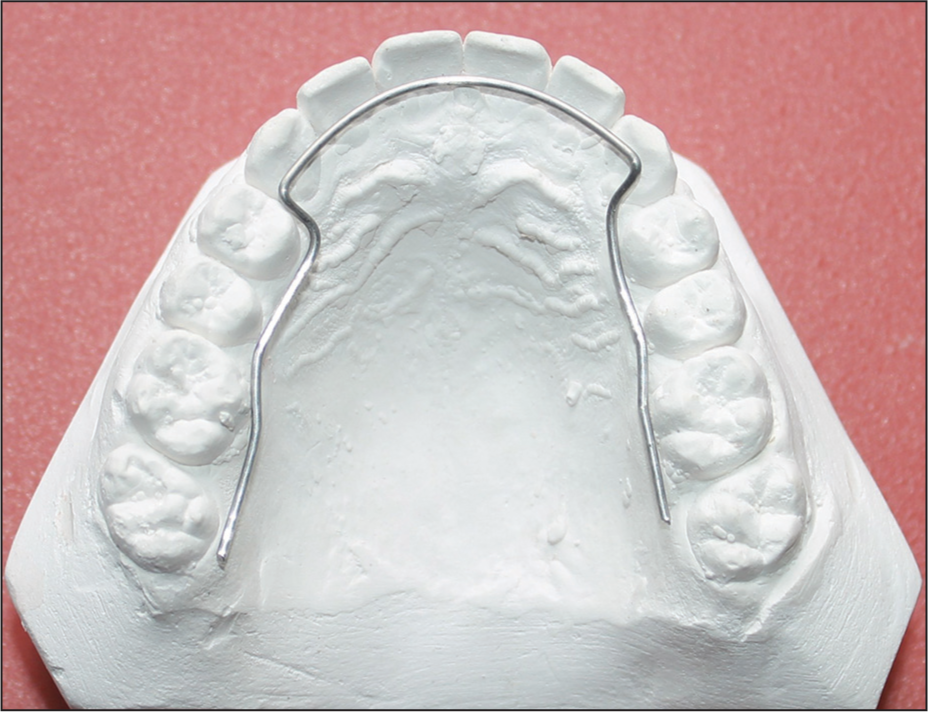Translate this page into:
Chain’s retainer: A removable retainer
This article was originally published by Wolters Kluwer and was migrated to Scientific Scholar after the change of Publisher.
Abstract
Retention is the key for the successful orthodontic treatment result. This new retainer is highly esthetic and easy to fabricate.
Keywords
Esthetic
maintenance
retainer
INTRODUCTION
In orthodontics, retention is a key to the success of orthodontic treatment, which helps in maintenance of the tooth in desired position achieved during active orthodontic treatment. Earlier various orthodontic retainers and their modifications have emerged, and their designs have certain inherent advantages and disadvantages. This new design of orthodontic retainer called Chain’s retainer is introduced in an attempt to reduce the disadvantages of the previous appliances.
TECHNIQUE
Working cast is made at the end of the treatment.
A wrap around bow is made up of 21-gauge wire encircling the last molar, and the lingual arm is cut mesial to the second molar [Figure 1-c].
 Figure 1
Figure 1- (a) A wrap around the bow is made up of 21-gauge wire encircling the last molar, and the lingual arm is cut mesial to the second molar (occlusal). (b) A wrap around bow is made of 21-gauge wire encircling the last molar, and the lingual arm is cut mesial to the second molar (lateral). (c) A wrap around bow is made of 21-gauge wire encircling the last molar, and the lingual arm is cut mesial to the second molar (frontal)
A lingual adaptive wire is made of 19-gauge wire touching the lingual surface of the teeth [Figure 2].
 Figure 2
Figure 2- A lingual adaptive wire is made of 19-gauge wire touching the lingual surface of the teeth
The cut ends are overlapped and soldered [Figure 3].
 Figure 3
Figure 3- The cut ends are overlapped and soldered
Acrylic is then added on the lingual side from premolar to the molars [Figure 4].
 Figure 4
Figure 4- Acrylic is then added on the lingual side from premolar to the molars
The appliance is then finished and delivered [Figure 5].
 Figure 5
Figure 5- Finished appliance
ADVANTAGES
It has a minimal acrylic component which rests only on teeth and tissue to take the support of tissues for its retention; therefore, it is less bulky, has low food accumulation, and is easy to clean. It does not have a crossover wire thus avoids opening of extraction space and opening of bite. The patient’s speech and taste are not compromised. The U-loops cause no gingival impingement and also they are less visible, hence more comfortable and esthetic.
CONCLUSION
Any treatment is incomplete unless the treatment results can be retained. Orthodontic retainers help achieve this. Chain’s retainer is an effective orthodontic retainer with the added advantages of improves in patient’s compliance, not only retention of the result but also decreasing the chances of relapse after orthodontic treatment.
Financial support and sponsorship
Nil.
Conflicts of interest
There are no conflicts of interest.






